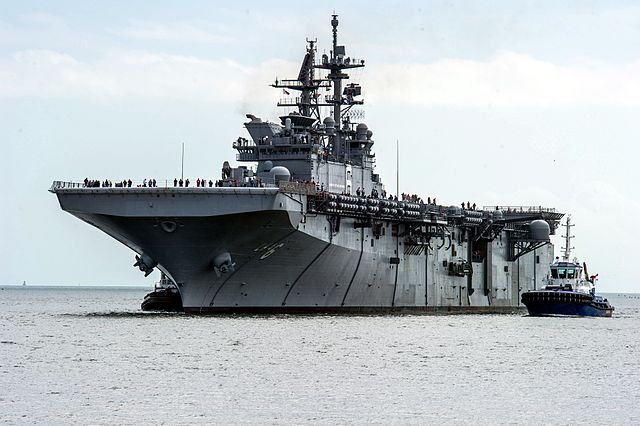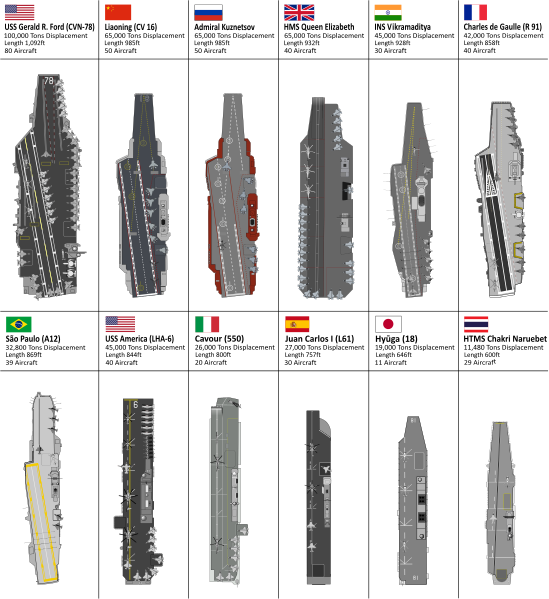Robert Farley examines the claim that the US Navy has 10 aircraft carriers:
Last week the U.S. Navy accepted USS America, first of the America-class amphibious assault ships, into service. Unlike most recent amphibious assault ships, USS America and her sister USS Tripoli lack well-decks, instead focusing on aviation facilities. When fully operational, America and Tripoli will operate as many as 20 F-35Bs, potentially playing a critical role in what the Navy projects as the future of air superiority.The U.S. Navy amphibious assault ship USS America (LHA-6) returns to Huntington Ingalls Shipyard, Pascagoula, Mississippi (USA), after completing sea trials. During the trials, the ship’s main propulsion, communications, steering, navigational and radar systems were tested for the first time at sea. America will be the first ship of its class, replacing the Tarawa-class of amphibious assault ships.
Inevitably, the delivery of USS America rekindles the ongoing conversation over what, precisely, constitutes an aircraft carrier. In the United States, we endure the polite fiction that the USN’s 45,000 ton aircraft carriers are not aircraft carriers, but rather some other kind of creature. USS America is roughly the same size as the French Charles De Gaulle and the INS Vikramaditya, although a bit smaller than the RFS Admiral Kuzetsov or her Chinese sister, the Liaoning. America is considerably larger than recent aircraft-carrying ships constructed for the Korean, Japanese, and Australian navies.
As an educator, I can attest to some frustration in relating to students that the United States operates ten aircraft carriers, plus another nine ships that we would refer to as aircraft carriers if they served in any other navy. And while I appreciate the desire of analysts to differently categorize the capabilities of Wasp and Nimitz-class carriers, I wish that people had a firmer grasp on the abject silliness of claiming that a 45,000 ton flat-decked aircraft-carrying warship is not, in fact, an aircraft carrier. Think of the children.
Wikimedia offers this visual aid to understanding the relative sizes and carrying capacity of aircraft carriers from the US Navy and other navies:





